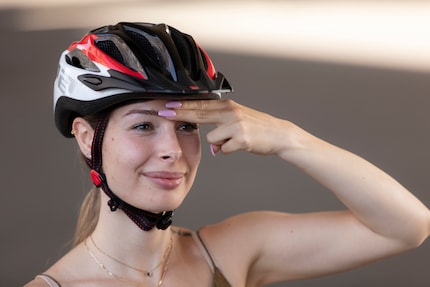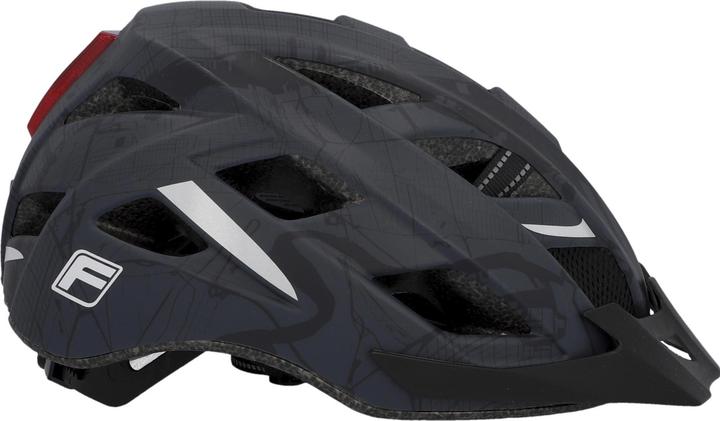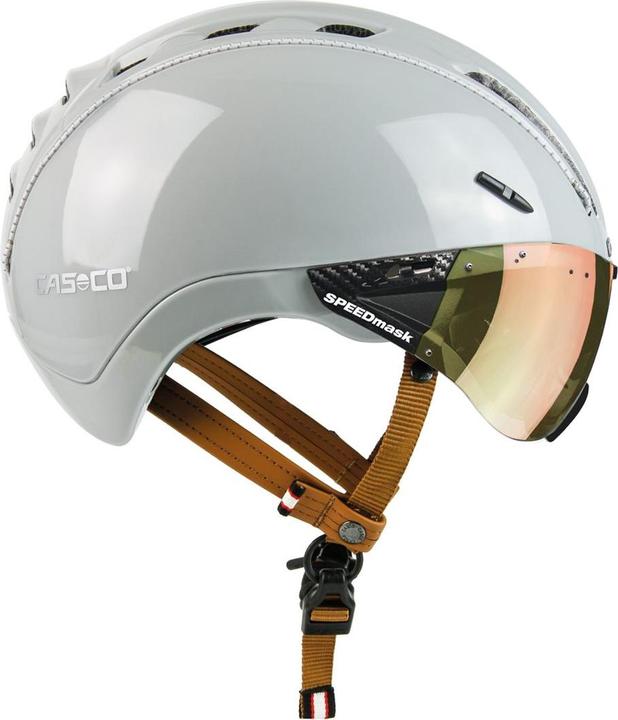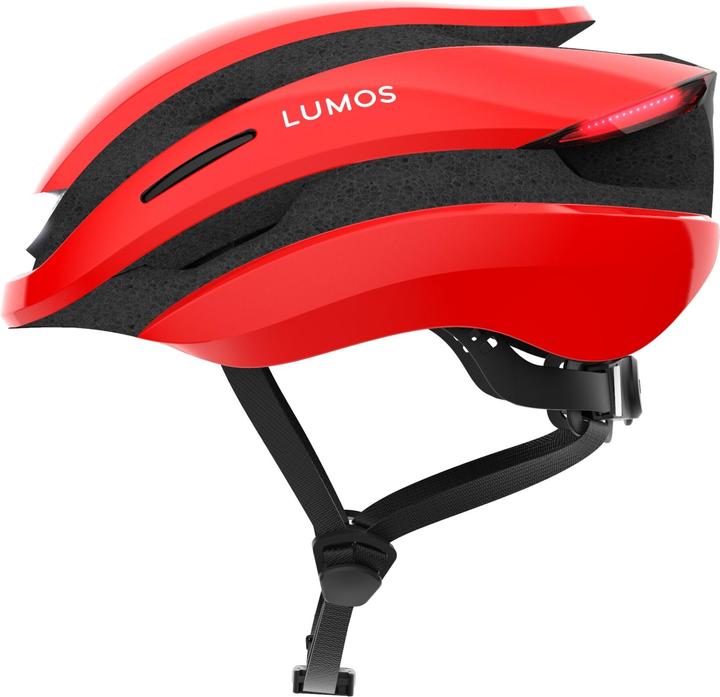

A bicycle helmet will protect you – but only if you put it on correctly
Colourful, stylish, highly functional – our wide range of bike helmets offers something for everyone. Often, however, we wear helmets in such a way that they’d be of no use in an accident.
Even if it isn’t legally required, wearing a helmet while cycling is highly recommended. It protects you from serious head injuries in case of an accident. According to studies by the Swiss Council for Accident Prevention (BFU), three out of five cyclists in Switzerland wear a helmet when they ride.
Whether they also wear it correctly hasn’t been investigated. In everyday life, you always notice people who wear a helmet. But out of ignorance or fear of ruining their hairstyle, some just lightly drape it on. That’s about as useful as not wearing one. Best to stick to these important rules.
- The front edge of the helmet should be two finger widths above the root of the nose (see photo below).
- The side bands should rest on the skin at the cheeks; below the chin, the band should be tight enough that at most one or two fingers fit between.
- Do not use accessories such as lights or cameras on your helmet; in the event of an impact, the helmet should be able to slide over the impact surface as smoothly as possible.

Source: BFU/Dominik Baur
Tips for choosing the right bicycle helmet
Apart from accident protection, your bike helmet should do one thing above all: sit comfortably on your head. If a helmet has a lot of adjustment options, there’s a good chance you’ll be able to set it up perfectly. Almost always, there’s a wheel which allows you to adjust the circumference of the inner head band. The side straps can usually be adjusted in height too.
When it comes to design, you’re spoiled for choice. Most manufacturers also offer bike helmets in muted colours like grey, silver and black. However, if safety comes before looks for you, it’s better to choose colours that make you highly visible in traffic. Preferably even helmets with reflective elements. If you really want an inconspicuous colour, helmets with integrated lights can be a good compromise.
What are the standards for bicycle helmets?
The most important standard for bicycle helmets is EN 1078. This specifies requirements for materials, build, shock absorption, durability and ease of setting up a helmet. It also states how to test a helmet. For example, a helmet must be able to safely withstand a fall from one and a half meters onto a flat surface. All manufacturers who wish to market a new bicycle helmet must prove that their product complies with EN 1078. Consequently, all helmets on Galaxus also meet the standard.
For faster e-bikes (up to 45 km/h), there are helmets that offer increased protection. These additionally meet the NTA 8776 standard. Such helmets are also visually distinguishable. The shell of the helmet goes further down at the back of the head, and the protection is also reinforced at the temples. The testing criteria for the standard, which originates from the Netherlands, are around 20 per cent stricter than those of EN 1078. Developers of NTA-8776 helmets state around 40 per cent better cushioning, plus better neck and temple protection.
In addition to the standards, there are also protection systems from manufacturers themselves. MIPS, for example, provides an additional sliding shell in the helmet.
Replace your bicycle helmet after an accident
You should handle your bicycle helmet with care. It’ll protect you, but only if you protect it. For example, don’t let it fall on the ground, which could easily damage it. This is even more true for hard impacts – and, of course, after an accident. Although you may not see anything besides a scratch, the helmet could have structural damage. Hairline cracks in the material could prevent the helmet from protecting you well enough in a future accident.
Manufacturers and experts alike therefore recommend replacing a bicycle helmet if it has taken a knock. If this isn’t the case, a replacement is recommended after five years at the latest. UV radiation and weather also take its toll on the material in the long run.
Award winning bike helmets
Bike helmets are regularly tested by experts at consumer magazines and journals. Here’s a selection of currently recommended models.
«Stiftung Warentest»
The German magazine last subjected several bicycle helmets to a comparison in July 2021. Here are the top three ranked products:
SRF Magazin’s Kassensturz
In April 2023, a laboratory tested eleven bicycle helmets on behalf of the SRF consumer programme Kassensturz. Eight received the test grade «Good», including these models:
Test portal Kaufkompass
The portal Kaufkompass, run by an independent editorial team, has selected test winners from a total of 47 helmets across various categories.
The overall victory there goes to the Urban Planet LED. This helmet is «super tough, extremely comfortable to wear, illuminated and equipped with additional protection in the rear and temple area». In summary, «the Uvex Urban Planet LED is the ideal head protection for cyclists and inline skaters».
For the Kaufkompass editors, the price-performance winner is a model from Fischer:
For cyclists who – like me – don’t enjoy having insects in their eyes and prefer to travel with a visor rather than glasses, this helmet is recommended:
If you want a helmet with lights and turn signals, this is the right place. The Lumos bike helmet is also available in other colours. My editorial colleague Michael Restin tested the model at its market launch. You can read his report here.
Header image: ABUS
Journalist since 1997. Stopovers in Franconia (or the Franken region), Lake Constance, Obwalden, Nidwalden and Zurich. Father since 2014. Expert in editorial organisation and motivation. Focus on sustainability, home office tools, beautiful things for the home, creative toys and sports equipment.
Practical solutions for everyday problems with technology, household hacks and much more.
Show all










